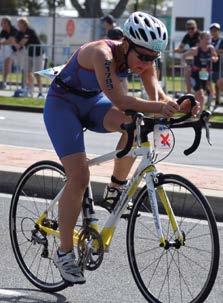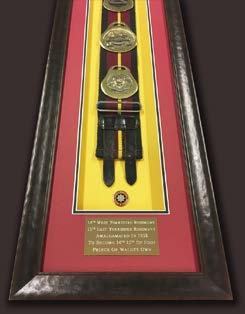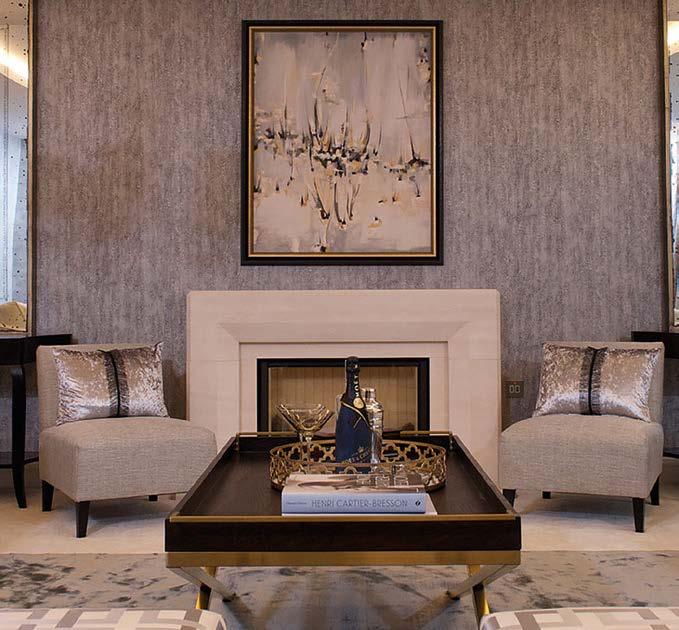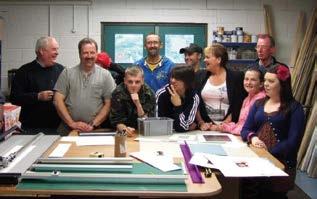
9 minute read
Masterclass
Stacking
Mouldings (Coastal Woods) Master Class – Jon Price GCF (APF)
Advertisement
Larson-Juhl’s Coastal Woods range is an unusual concept. In the context of our industry, I’d even call it ‘left field’. However, until recently I’ve been guilty of having taken very little notice of this unique range.
Like me, you may not have given Coastal Woods the small amount of time necessary to understand how it works. Having spared it only a quick glance, you may even have wondered what the point of the Coastal Woods range is. So, let me explain. The point is, it’s innovative, it’s versatile and, most of all, it looks awesome.
Coastal Woods was brought to my attention when Larson-Juhl suggested I use the range to frame a canvas for the ‘Stacking mouldings’ video destined for their new website. Having framed the piece and completed the filming, I put the finished result on display in my shop window. Although I was pleased with the framed piece at the time, the film crew and I were keen to move on to the next video and so, once again, I didn’t give Coastal Woods the attention it deserved. Fortunately my customers did. The positive comments and requests I have received for ‘A frame like that one’ have been numerous enough to finally make me take notice and see the Coastal Woods’ light.
In fact, when I stopped to think about it, I realised the Coastal Woods range has many aspects which appeal to me. A combination of off-set mouldings, spacers and standard mouldings available in a number of colours and profiles that are designed to be mixed, matched and stacked is a really clever concept. Joined together or used independently, the range can be utilised to frame canvases, objects, textiles or art on paper. The collection has a choice of 104 different components, including deep rebate options and the off-sets offer any framed item a great deal of added width and presence. In other words, the Coastal Woods range is innovative and versatile. But most of all 2 2
it’s eye catching, it’s fun and it’s funky. Personally I think the world of picture framing needs all the ‘funky’ it can get.
As a general rule, I base my mount and moulding choices on the colours, textures and feel of the artwork being framed. The canvas chosen for the ‘stacking mouldings’ video is a modern winter scene, the main colours of which are shades of white, grey and black. Although a white frame would work, I feel that the black is much more dramatic and makes a statement, without detracting from the picture. The woody grain of the Coastal Woods range sits well with the trees in the mid-ground of the scene and also works with the texture of the canvas. I chose to stack a combination of the 34mm wide, 42mm deep 482 000 167, the 12mm high 117 000 167 spacer and the 53mm wide 537 000 167 offset moulding, which manage to provide a beast of a frame and yet doesn’t overwhelm the picture. I really like the way the canvas sits towards the front of the frame and then the combined pieces of the stacked mouldings drop away and then out by nearly 4cm before finally coming forward again to sit just a little higher than the canvas. The simple
bevel on the 482 000 167 softens the otherwise square edges and the fact that the spacer then sits in a few millimetres from the rebate edge of the moulding adds another little detail. The overall effect is modern, stylish and somehow simple and complicated at the same time. No wonder my customers like it so much!
I started the framing process by stretching the canvas using Larson-Juhl’s Arrow-Head system. It’s straightforward, quick and ideal for open edition canvas prints.
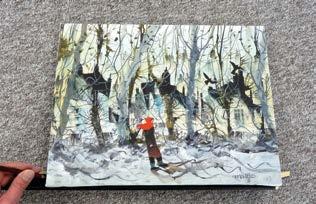
FIGURE 1
The Coastal Woods off-set mouldings are measured and cut just like any other moulding. However, like an L-shape, you
FIGURE 3 & FIGURE 4 FIGURE 7
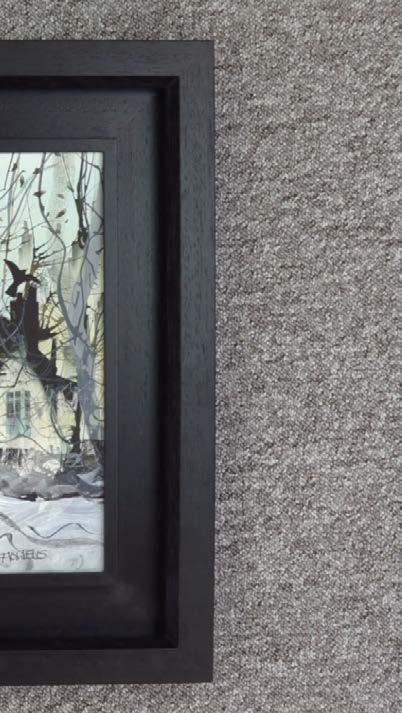
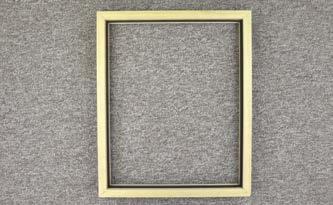

need to underpin the different heights of the moulding with different length v-nails. With the 537 000 167 off-set I pin the inside (closest to the aperture) of all four corners first, using a 15mm v-nail, then the middle and the outside once I’ve changed to shorter 7mm nails. FIGURE 2 Once the offset has been joined, the outer moulding can be measured against it and then cut, glued and underpinned. Because both mouldings are made from the same wood and have the same finish, no expansion space is needed and a tight fit between the two mouldings can be achieved. The spacers can also be cut at this point and glued into the rebate of the outer moulding. When the glue has dried and all four spacers are fixed into position, place the off-set in position inside the aperture of the outer moulding. It should come to rest on the spacers.
FIGURE 5
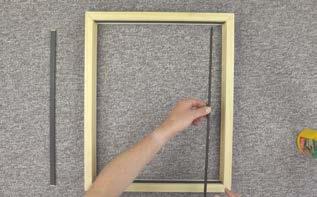
The offset can now be joined to the outer moulding. Using the 12mm spacer means that the offset sits in just the right position to make joining easy. I used my trusty Fletcher Multimaster for a neat professional finish.
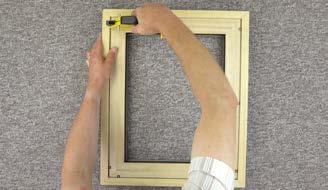
FIGURE 6

To make sure the off-set sits centrally in the aperture of the outer moulding, I use off-cuts of mountboard placed into the gaps between the offset and the outer moulding on all four sides.

Finally, the canvas can be fixed into place. Again, pieces of off-cut mount or backboard can be used to ensure even spacing. There are lots of ways to hold a canvas in position but the 22.5mm rebate of the 537 000 167 off-set, combined with the 721 500 000 stretcher bar leave enough space to use framers points. These should be placed a maximum of 15cm apart.
I’m a big fan of stacking mouldings to offer a unique and individual frame. Customers can buy cut-to-size frames from a range of mouldings for very little over the internet. So, the more designoriented and bespoke a framer can be, the better and the more they’ll find customers willing to pay for that service. Coastal Woods fits right in with that philosophy. It’s innovative, different and very noticeable, making it perfect for the modern, design-conscious framer trying to stand out from his or her competitors.
Jon is Cornwall’s only Guild Certified Framer and a member of the Fine Art Trade Guild’s Framing Standards and Qualifications Committee.
handmadepictureframing.co.uk
Products used:
Stretcher moulding 721 500 000
Off-set moulding 537 000 167
Spacer 117 000 167
Moulding 482 000 167
Wood glue 999 000 090
Screws 999 000 094
THE ART OF RESTORATION
For over 50 years, Plowden & Smith has enjoyed a formidable reputation as one of the greatest restoration companies: conserving and restoring pictures, objects, furniture and much more, as well as framing and display mounting works of art and objects for galleries and some of the greatest museums. Many things have changed over that time. For example, the worldwide growth of contemporary art can test contemporary restorers, due to the materials used in some conceptual artworks. But other things have endured, including the company’s insistence on delivering the highest quality, and their widely-acknowledged reputation for innovation. Today, Plowden & Smith is run by Kevin Smith and Camilla Hughes-Hunt, who have gathered a team of some of the very best specialists in conservation and restoration.
Camilla and her team have carried out all sorts of framing projects within their restoration remits, from actually making frames and framing artworks to restoring damaged gilded frames. Camilla told 4walls: “Some of the most memorable include working with Kensington Palace in framing fashion sketches for two exhibitions: Fashion Rules featuring designs for the Queen and Princess Margaret and Diana: Her Fashion Story. The sketches for Diana had been annotated by her, so it was very special to see her involvement which led to the final creations.
Another favourite job of Camilla’s involved a number of oil paintings from Prideaux Place in North Cornwall, a historic house used in the filming of the Poldark TV series. The artworks had been badly damaged by water and came in for a complete programme of restoration. The portraits were surface cleaned and re-lined to stabilise the flaking paint, the losses were then filled and retouched and a final layer of varnish was used to help protect the paint layer from further damage and to give a cared for appearance. The large, decadent gilded frames required surface consolidation to prevent loss of gilding, missing sections were made up in plaster and fitted into position and then were reworked to match the subtle tones of the original material. It was very satisfying to see both paintings and frames returned to their former glory.
Trends
Camilla has noticed that there is an increasing trend towards hanging multiple pictures together, which is being championed by various interior designers, this is a departure from the more recent fashion for a more minimal approach. She added: “We are also seeing more contemporary art in our studios, artists use unusual and delicate materials such as plastic, resin and wax which are often susceptible to damage and have inherent weaknesses. Whilst many conservators shy away from these more problematic projects, Plowden & Smith rise to the challenge!”
While Plowden & Smith handmake some of their frames, they are fans of the Larson-Juhl Barefaced range amongst others, as they have the expertise to provide a bespoke finish and love the versatility these product offers.
Looking to the future, the team has just moved to new purpose-built studios, which they designed themselves. Camilla is very excited about this: “The move will allow us to continue to grow our business and take on a greater number of large conservation and restoration projects. 2019 will be an exciting year for Plowden & Smith!”

After
TO RUSSIA WITH LOVE
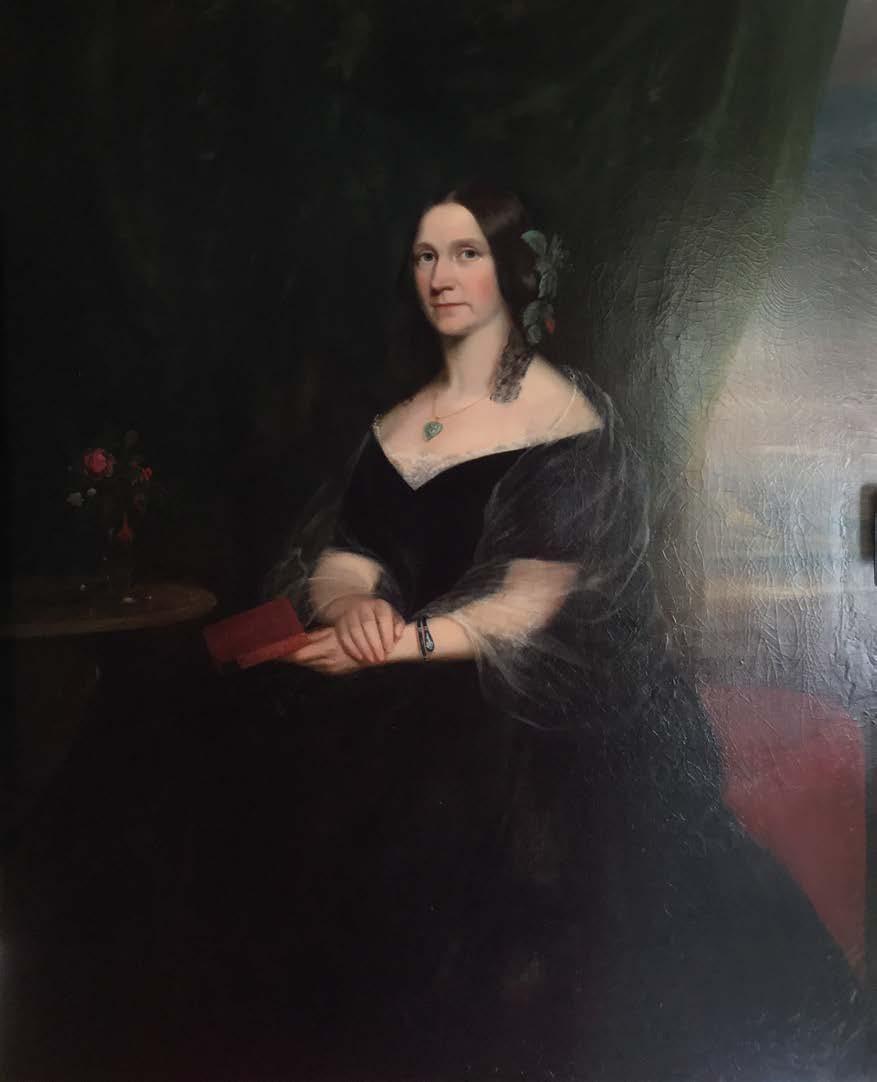
Larson-Juhl was recently involved with a fascinating international brief that Plowden & Smith had in from Qatar. A photographic exhibition that celebrated the history of the region was scheduled for St Petersberg. The problem was that some of the work was not framed. A team solution saved the day, when international sales director Steve Burke and his colleagues suggested a number of suitable framers. Camilla spoke with Jon Price in Cornwall who accepted the challenge and joined a Plowden & Smith paper conservator in Doha. Jon used Larson-Juhl moulding and Optium acrylic. The works then went to St Petersburg, Russia and the client was delighted with the work! plowden-smith.com

